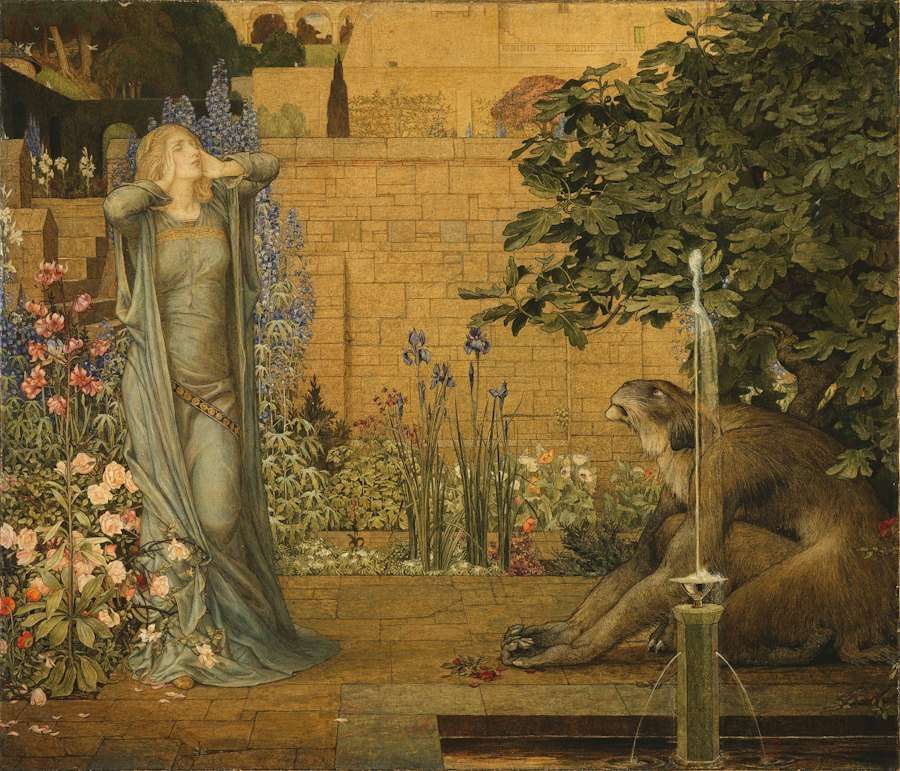Unraveling the Mystical Meanings of Snake Symbolism in Different Cultures

Snakes have long been a powerful symbol in various cultures throughout history. From ancient civilizations to modern societies, snakes have held a significant place in mythology, folklore, religion, art, and literature. The symbolism associated with snakes is diverse and complex, often representing both positive and negative aspects. This article will explore the prevalence of snake symbolism in different cultures, the importance of snakes in mythology and folklore, their role in ancient religions and spiritual practices, the dual nature of snakes as symbols of good and evil, the significance of snake imagery in art and literature, the cultural significance of snake dreams and visions, the connection between snakes and healing in traditional medicine, the symbolic meaning of snake tattoos and body art, and the influence of snake symbolism in modern culture and pop culture.
Key Takeaways
- Snake symbolism is present in cultures across the world.
- Snakes play important roles in mythology, folklore, and ancient religions.
- The dual nature of snakes is often depicted as both good and evil.
- Snake imagery is significant in art, literature, dreams, and traditional medicine.
- Snake symbolism continues to influence modern culture and pop culture.
The Importance of Snakes in Mythology and Folklore
Snakes have played a prominent role in myths and folktales across various cultures. In Greek mythology, for example, the serpent-like creature known as the Hydra was a fearsome monster with multiple heads that grew back when cut off. The Hydra was eventually slain by the hero Hercules as one of his twelve labors. In Norse mythology, the world serpent Jormungandr encircled the earth and was destined to fight against Thor during Ragnarok, the end of the world.
In Hindu mythology, snakes are associated with deities such as Shiva and Vishnu. Shiva is often depicted with a snake coiled around his neck, symbolizing his control over death and rebirth. Vishnu is often depicted resting on a serpent called Shesha, representing his power to sustain and protect the universe.
The symbolic meanings attributed to snakes in these stories vary. In some cases, snakes represent wisdom, transformation, or fertility. In other cases, they are seen as symbols of danger, deceit, or evil. The complexity of snake symbolism in mythology and folklore reflects the dual nature of snakes as both positive and negative symbols.
The Role of Snakes in Ancient Religions and Spiritual Practices
Snakes have held a significant place in ancient religions and spiritual practices. In ancient Greek religion, for example, the cult of Asclepius, the god of healing, was associated with snakes. Snakes were believed to possess healing powers and were kept in temples dedicated to Asclepius. People would visit these temples to seek healing through rituals involving snakes.
In Hinduism, snakes are revered as sacred creatures. They are associated with Kundalini, the divine energy that lies dormant at the base of the spine. When awakened, Kundalini rises through the chakras, leading to spiritual enlightenment. Snakes are also associated with Lord Shiva, who is often depicted with a snake coiled around his neck.
Snakes are also important in shamanic traditions around the world. Shamans often use snake imagery and symbolism in their rituals and ceremonies. The shedding of a snake’s skin is seen as a metaphor for personal transformation and spiritual growth.
The Dual Nature of Snakes: Good vs. Evil Symbolism
| Aspect | Good Symbolism | Evil Symbolism |
|---|---|---|
| Religion | Snakes are revered in Hinduism and Buddhism as symbols of transformation and healing. | In Christianity, snakes are associated with Satan and temptation. |
| Mythology | The ancient Greeks saw snakes as symbols of wisdom and healing, with the god of medicine, Asclepius, often depicted with a staff entwined by a snake. | In Norse mythology, the serpent Jormungandr is a harbinger of the end of the world. |
| Culture | Some Native American tribes view snakes as symbols of fertility and renewal. | In Western culture, snakes are often associated with deceit and danger. |
| Science | Snakes play an important role in controlling rodent populations and are used in medical research to develop antivenom and study the nervous system. | Some species of snakes are venomous and pose a threat to humans and other animals. |
One of the fascinating aspects of snake symbolism is its dual nature, representing both positive and negative aspects. In some cultures, snakes are revered as sacred creatures associated with wisdom, fertility, and healing. In other cultures, they are feared as symbols of danger, deceit, and evil.
In ancient Egypt, for example, the cobra was a symbol of protection and royalty. The pharaohs wore headdresses adorned with the image of a cobra to symbolize their power and authority. On the other hand, in Judeo-Christian tradition, the serpent in the Garden of Eden is seen as a symbol of temptation and evil.
The conflicting symbolic meanings of snakes reflect the complexity of human perception and interpretation. Snakes can be seen as symbols of transformation, shedding their skin and renewing themselves. They can also be seen as symbols of danger and deceit, with their venomous bites and ability to camouflage themselves.
The Significance of Snake Imagery in Art and Literature
Snake imagery has been used in art and literature throughout history to convey various symbolic meanings. In ancient Greek art, for example, snakes were often depicted as guardians of the underworld or as symbols of fertility and rebirth. The famous statue of Laocoön and his sons being attacked by serpents is a powerful example of snake imagery in ancient art.
In literature, snakes have been used as symbols of temptation, evil, or transformation. In William Shakespeare’s play “Macbeth,” the character Lady Macbeth refers to the snake as a symbol of deceit and treachery. In the biblical story of Adam and Eve, the serpent tempts Eve to eat the forbidden fruit, leading to their expulsion from the Garden of Eden.
Snake imagery in art and literature can convey a wide range of symbolic meanings, depending on the context and interpretation. It can represent wisdom, danger, transformation, or the duality of human nature.
The Cultural Significance of Snake Dreams and Visions

Snake dreams and visions have held cultural significance in various cultures throughout history. In some cultures, snake dreams are seen as positive omens, representing wisdom, transformation, or spiritual awakening. In other cultures, they are seen as negative omens, representing danger or deceit.
In ancient Egypt, for example, dreaming of a snake was believed to be a sign of good fortune and protection. The ancient Egyptians associated snakes with the goddess Wadjet, who was often depicted as a cobra. Snakes were seen as protectors against evil spirits and were believed to bring blessings.
In Native American cultures, snake dreams are often seen as messages from the spirit world. Snakes are associated with transformation and healing in many Native American traditions. Dreaming of a snake can be seen as a sign of personal growth or a call to embrace change.
The symbolic meanings attributed to snake dreams and visions vary across cultures, reflecting the diverse interpretations and beliefs surrounding snakes.
The Connection Between Snakes and Healing in Traditional Medicine
Snakes have been associated with healing properties in traditional medicine practices. In ancient Greek and Roman medicine, for example, snake venom was used as a remedy for various ailments. The venom was believed to have therapeutic effects when used in small doses.
In Chinese medicine, snake products such as snake oil and snake bile have been used for centuries to treat various conditions. Snake oil, derived from the fat of certain species of snakes, was believed to have anti-inflammatory and pain-relieving properties.
The symbolic meanings associated with the healing properties of snakes reflect their ability to shed their skin and renew themselves. Snakes are seen as symbols of transformation and regeneration, qualities that are often associated with healing.
The Symbolic Meaning of Snake Tattoos and Body Art
Snake tattoos and other forms of body art have been popular throughout history, carrying various symbolic meanings. In some cultures, snake tattoos are seen as symbols of protection, wisdom, or fertility. In other cultures, they are seen as symbols of danger or deceit.
In Japanese culture, for example, the snake is a popular motif in traditional tattoo art. It is often depicted as a guardian or protector against evil spirits. In Western culture, snake tattoos are often associated with rebellion or danger, reflecting the negative connotations of snakes in Judeo-Christian tradition.
The symbolic meanings conveyed through snake tattoos and body art can vary depending on the individual’s interpretation and cultural context. They can represent personal transformation, spiritual awakening, or the duality of human nature.
The Influence of Snake Symbolism in Modern Culture and Pop Culture
Snake symbolism continues to have a significant influence in modern culture and pop culture. Snakes are often used as symbols in advertising, fashion, and entertainment. They are associated with qualities such as power, mystery, and sensuality.
In the fashion industry, snake prints and patterns are popular, conveying a sense of exoticism and allure. In music, snakes are often used as symbols of rebellion or danger. The rock band Guns N’ Roses, for example, used a snake as a symbol on their album covers and merchandise.
Snake symbolism has also been adapted and reinterpreted in contemporary contexts. In the Harry Potter series by J.K. Rowling, for example, the character Voldemort is associated with snakes and is often referred to as “the Dark Lord.” The snake represents his connection to evil and his ability to speak Parseltongue, the language of snakes.
Understanding the Universal Significance of Snake Symbolism
In conclusion, snake symbolism has been prevalent in various cultures throughout history. Snakes have held a significant place in mythology, folklore, religion, art, and literature. The symbolic meanings attributed to snakes are diverse and complex, often representing both positive and negative aspects.
Snakes can represent wisdom, transformation, fertility, protection, danger, deceit, or evil. They can symbolize personal growth, spiritual awakening, or the duality of human nature. The significance of snake symbolism varies across cultures and reflects the diverse interpretations and beliefs surrounding snakes.
Understanding the universal significance of snake symbolism requires an appreciation for the complexity and diversity of human perception and interpretation. Snakes have been powerful symbols throughout history and continue to hold cultural significance in modern society. By exploring the various ways in which snake symbolism has been used and interpreted across cultures and throughout history, we can gain a deeper understanding of the universal themes and meanings conveyed through snake symbolism.
If you’re interested in exploring the symbolism of snakes, you might also enjoy reading about the symbolism of the moon. The moon has long been associated with mystery, intuition, and feminine energy. It is a symbol of cycles, transformation, and the subconscious mind. To delve deeper into this fascinating topic, check out this article on the symbolism of the moon at Symbolism Hub.
FAQs
What is snake symbolism?
Snake symbolism refers to the use of snakes as a representation of various concepts, ideas, and emotions in different cultures and religions around the world.
What do snakes symbolize?
Snakes can symbolize a variety of things, including rebirth, transformation, healing, fertility, wisdom, power, and danger. The meaning of snake symbolism can vary depending on the context and culture in which it is used.
What cultures use snake symbolism?
Snake symbolism has been used in many cultures throughout history, including ancient Egypt, Greece, and Rome, as well as in Native American, African, and Asian cultures.
What is the significance of snakes in mythology?
Snakes have played a significant role in mythology, often representing powerful deities or supernatural beings. In some cultures, snakes are seen as protectors or guardians, while in others they are associated with evil or trickery.
What is the connection between snakes and spirituality?
Snakes are often associated with spiritual and mystical experiences, and are sometimes seen as a symbol of the divine. In some cultures, snakes are believed to have healing powers, and are used in spiritual rituals and ceremonies.
What is the symbolism of the snake in Christianity?
In Christianity, the snake is often associated with temptation and sin, due to its role in the story of Adam and Eve in the Garden of Eden. However, snakes can also be seen as a symbol of wisdom and healing, as in the story of Moses and the bronze serpent.
What is the symbolism of the snake in Hinduism?
In Hinduism, the snake is often associated with the god Shiva, and is seen as a symbol of kundalini energy, which represents spiritual awakening and enlightenment. Snakes are also associated with fertility and protection in Hindu mythology.
What is the symbolism of the snake in Chinese culture?
In Chinese culture, the snake is one of the 12 animals of the zodiac, and is associated with wisdom, intuition, and transformation. Snakes are also seen as a symbol of good luck and prosperity in Chinese folklore.





